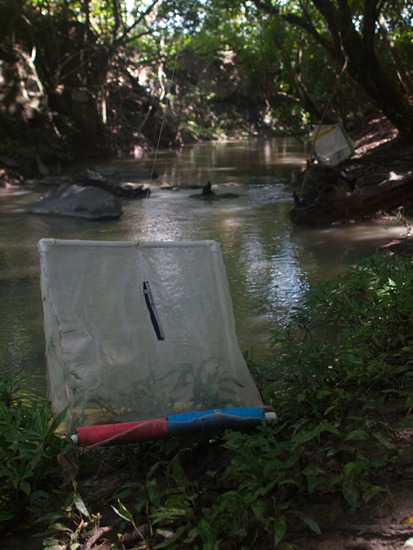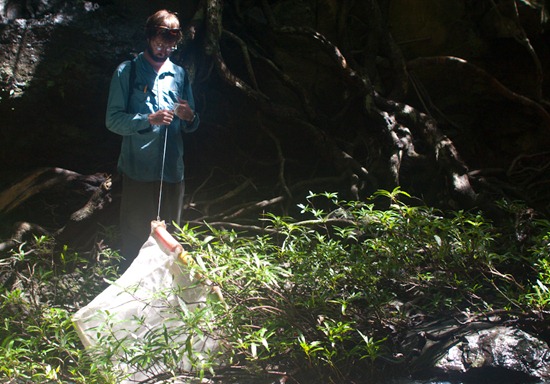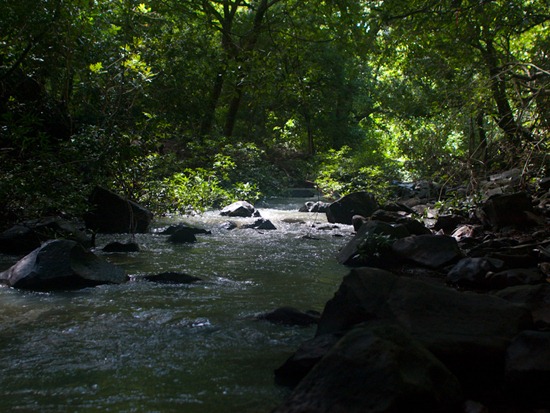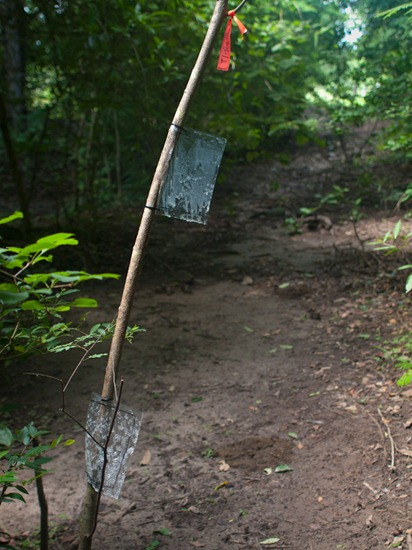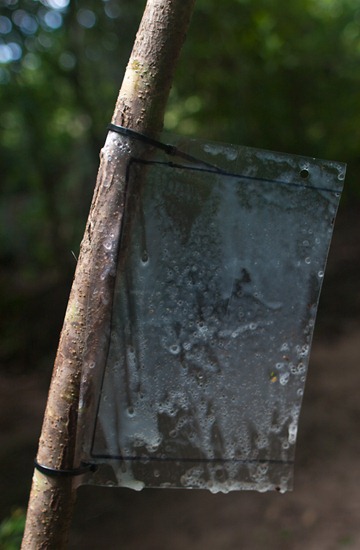Back in the lab, doing some chemistry on plant litter from Costa Rica. I didn’t think to take photographs until I was almost done with this step in the process – just imagine these 24 vials times, say, 32… that would have made a cooler photograph.
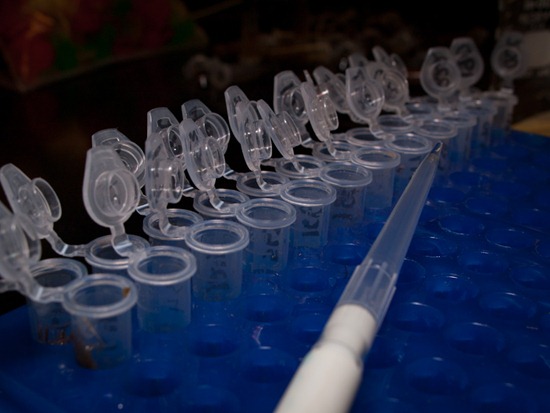
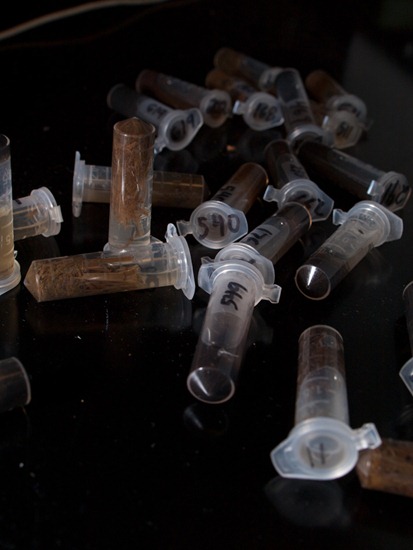
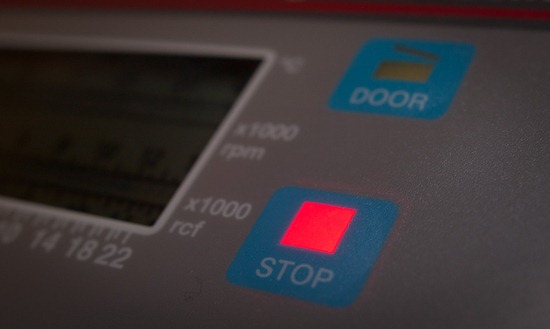
Back in the lab, doing some chemistry on plant litter from Costa Rica. I didn’t think to take photographs until I was almost done with this step in the process – just imagine these 24 vials times, say, 32… that would have made a cooler photograph.



A photograph featured on Dormivigilia
As a birthday present, Jenn gave me two tickets to the Georgia Aquarium, which Allison and I visited this past weekend. The main exhibit is divided into six distinct habitat types, from Georgian ocean shore and freshwater river/lentic species (including an exceptional tank containing the endangered Robust Redhorse (Moxostoma robustum), to cold salt water and oceanic species. The oceanic exhibit is the largest, containing FOUR whale sharks! There is also a hallway display on the capture and shipping of the whale sharks… hence “What Can Brown Do for You?”.
To illustrate invasive species and their ecological consequences, there was a display on Lionfish (Pterios volitans) invasion of the Caribbean and movement up the Eastern US coast as far as New England. I recall seeing some in Cahuita, CR too, although the display’s interactive Google Earth invasion history didn’t depict the lionfish’s migration into Central American coasts. The lionfish display had the most lionfish I’ve ever seen… super dense.
By the way… I’ve moved to Atlanta, Georgia for anyone reading this that didn’t know, although I’ll be headed back to Kent tomorrow afternoon to process some samples and hopefully finish much of my other dissertation work.
Scott, Joe and I retrieved a single Peromyscus sp. (probably leucopus) mouse during a mammal trapping trial early this summer. Joe had a position in Missouri trapping out mammals of all sorts from areas that they were not wanted, and he advised Scott in setting and baiting the Sherman traps. Here, Joe weighs the mouse; soon after, it escaped…
While in Palo Verde last summer, I met Ramsa Chaves, a graduate student at Dartmouth College under Brad Taylor and UCR licenciatura graduate. She used the OTS station in Palo Verde as a headquarters for her research on insect communities associated with streams in the Guanacaste region. Her and one or more assistants traveled to local streams that varied in surrounding land-use and sampled emergent insects during the day, returning to sort and process the catch in PV in the evening. I helped out one of those days to get a taste of her extraordinary and ambitious research project. From memory, Ramsa aimed to examine responses of insect communities to land-use differences and how these responses play-out in aquatic-terrestrial linkages.
We sampled two streams that she and Jereme had set traps in and around three days prior. In Quebrada Amores (lovers stream) within Reserva Biológica Lomas de Barbudal emergence traps were emptied. The floating, triangular traps, as suggested by their name, capture adult insects as the emerge from the stream to breed and feed in the surrounding terrestrial environment.
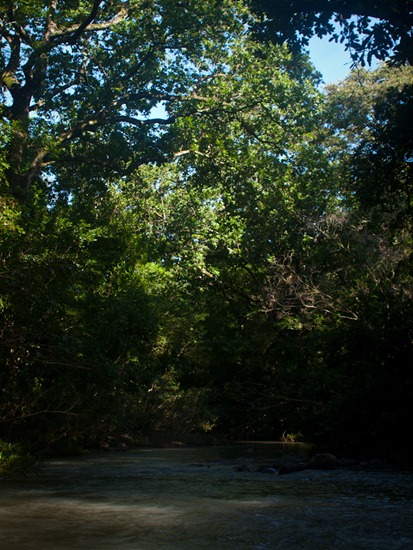
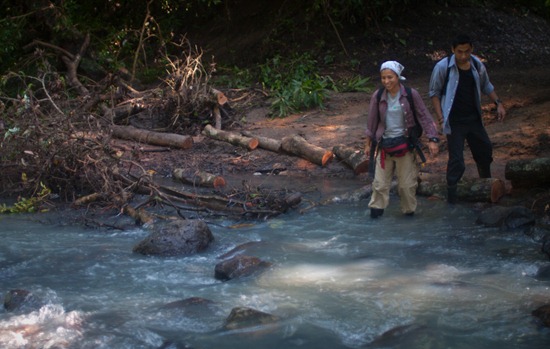
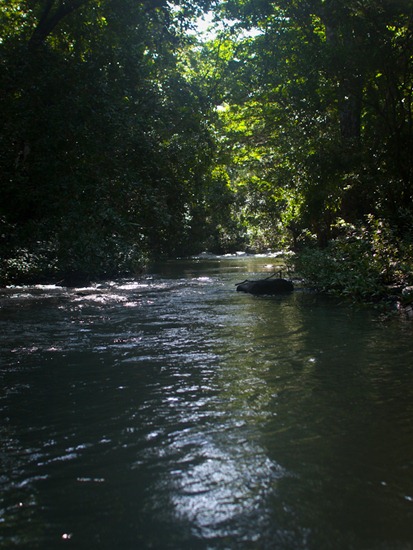
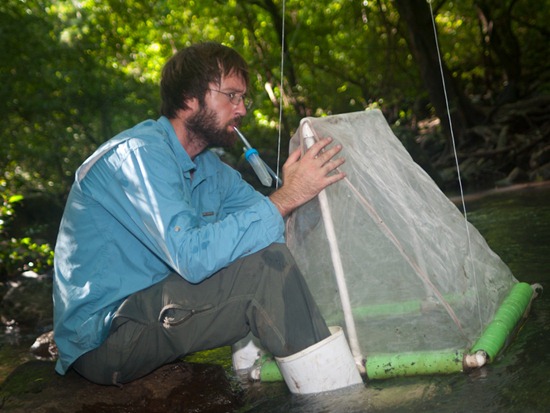
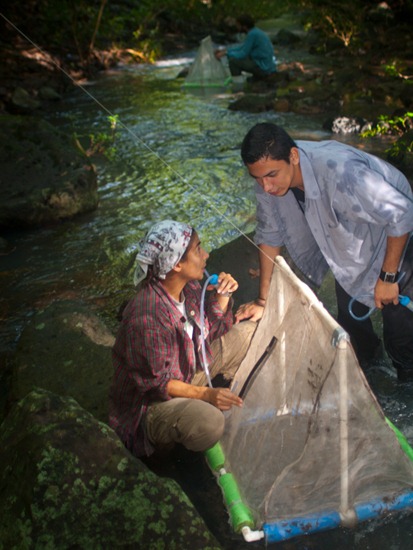
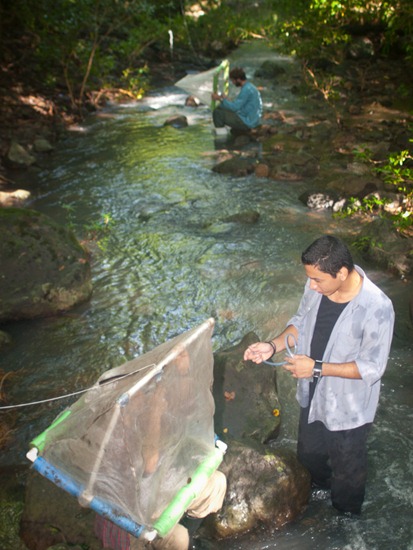
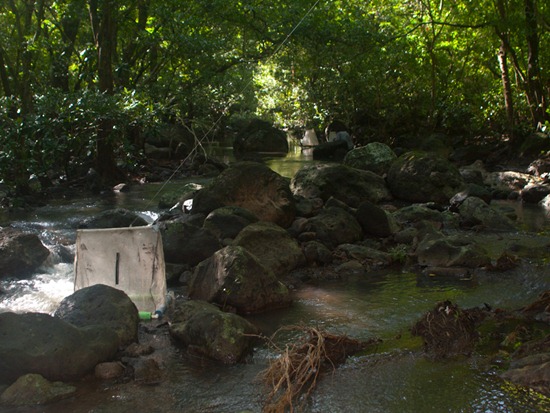
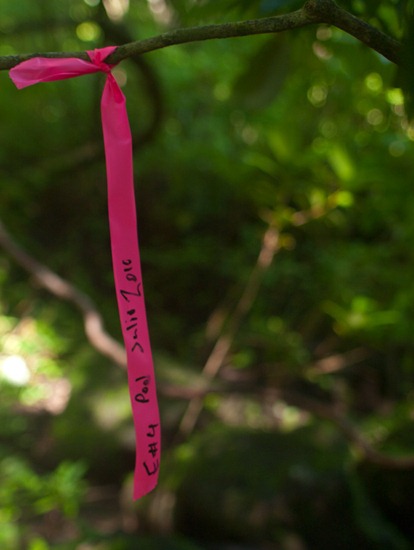
Río Pijije drains agricultural and residential land, in contrast to the protected, forested land-use surrounding Quebrada Amores. Emergence traps had settled ashore after a flash flood, and were not sampled, a common occurrence in the rainy season in dry forest areas. Sticky traps (transparent over-head sheets covered in glue, basically) were placed from 10 to 100 m from the stream edge to sample flying insects as they moved from the stream outward into the the forest or, in this case, cow pasture. In addition to sticky traps, we sampled using butterfly nets, which are not pictured here (probably for two reasons (1) I was sampling and (2) I knocked my net into a large paper wasp next and was promptly stung many, many times. It was an extremely memorable event for me). Both sampling methods have hopefully painted a picture for Ramsa showing how insects respond from and to a stream draining catchment with different land-use patterns.
